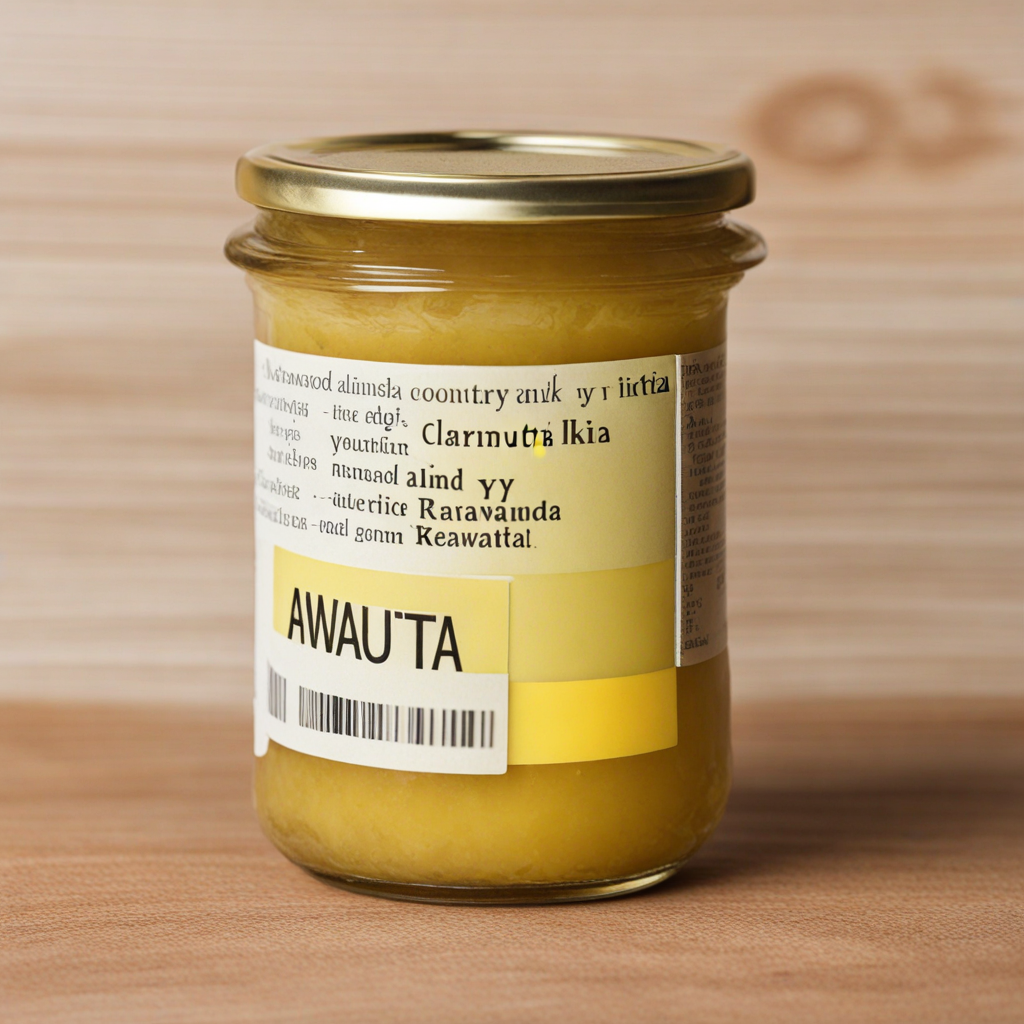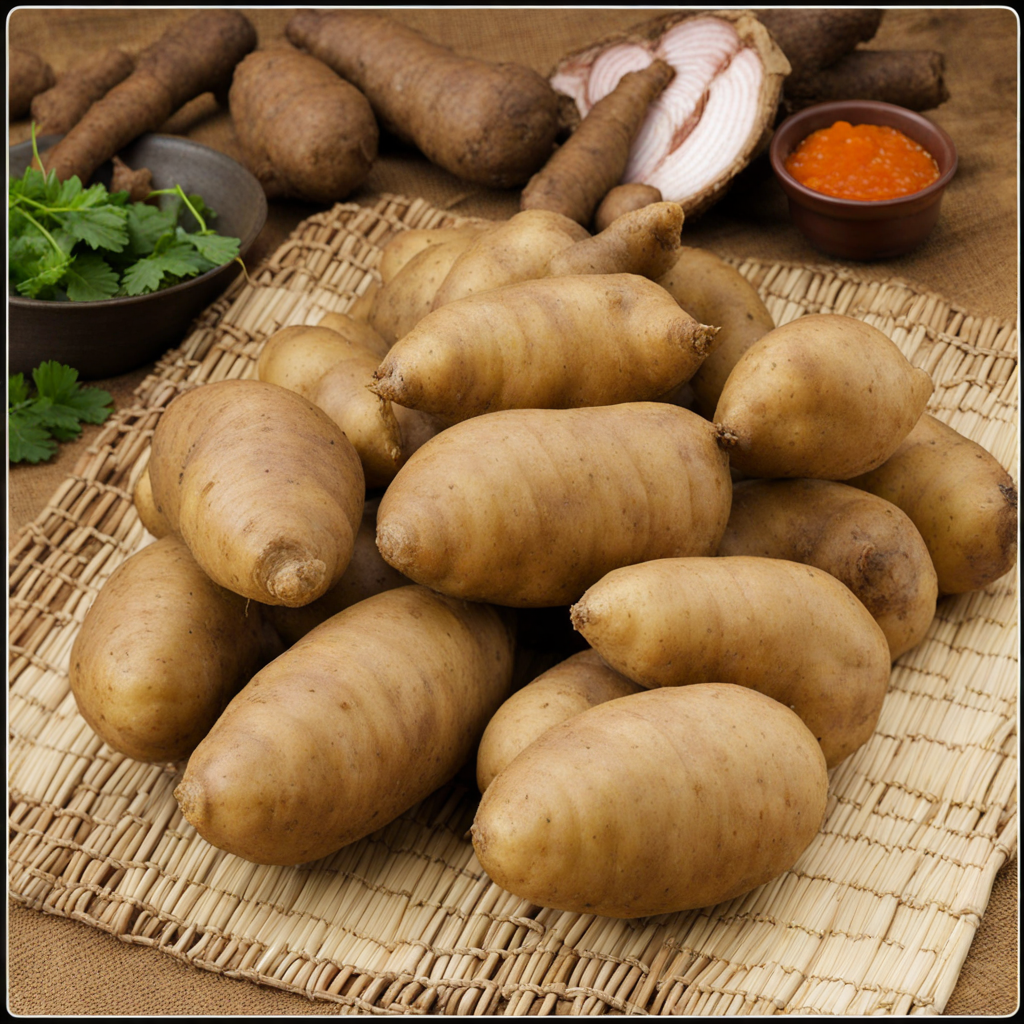Amavuta y'inka
Amavuta y'inka is a traditional Rwandan dish that showcases the rich flavors and culinary heritage of the region. This unique food is essentially a type of clarified butter made from cow's milk, known for its creamy texture and nutty aroma. The process of making Amavuta y'inka involves slowly simmering the milk to separate the fat from the water, resulting in a golden, luscious butter that embodies the essence of Rwandan pastoral culture. Its distinct flavor profile is often described as rich and savory, making it a delightful addition to various dishes. The versatility of Amavuta y'inka is one of its most appealing attributes. It can be used in a variety of ways, from cooking and frying to spreading on bread or incorporating into traditional stews. The butter not only enhances the taste of dishes but also adds a layer of richness that complements the natural flavors of local ingredients such as vegetables, grains, and meats. Rwandans often use it in a popular dish called "Isombe," which consists of cassava leaves cooked with ground peanuts and Amavuta y'inka, creating a hearty and satisfying meal that is both nutritious and flavorful. In addition to its culinary uses, Amavuta y'inka holds cultural significance in Rwanda. It is often associated with community gatherings and celebrations, symbolizing hospitality and abundance. When visiting a Rwandan home, you may find this delightful butter served as a gesture of warmth and generosity. As you explore the taste of Amavuta y'inka, you'll not only savor its unique flavor but also experience a connection to the traditions and values of Rwandan society, making it a truly enriching culinary adventure.
How It Became This Dish
Amavuta y'inka: A Culinary and Cultural Treasure of Rwanda #### Origins Amavuta y'inka, often translated as "cow butter," is a traditional Rwandan dairy product that has deep roots in the country's agricultural practices and cultural heritage. The origins of this delicacy can be traced back to the pastoral communities of the region, particularly among the Tutsi people, who have historically revered cattle as a symbol of wealth, status, and sustenance. Cattle have played a central role in Rwandan life, not only as a source of milk and meat but also in social and economic structures. The process of making Amavuta y'inka involves churning fresh milk into butter, a practice that has been passed down through generations. Traditionally, this process took place in wooden containers called "agaseke," where milk was poured, then vigorously churned using a stick known as "umukandara." This method not only produced a rich, creamy butter but also served as a communal activity, fostering social bonds among family members and neighbors. #### Cultural Significance The significance of Amavuta y'inka extends beyond its nutritional value. In Rwandan culture, dairy products, particularly butter, are associated with hospitality and generosity. Offering Amavuta y'inka to guests is a gesture of goodwill and a sign of respect. It is often served with a variety of traditional dishes, enhancing flavors and providing essential nutrients. Amavuta y'inka is also intertwined with various cultural rituals and ceremonies. For instance, during weddings and other significant celebrations, butter is used to bless the union, signifying abundance and fertility. In some instances, it may be smeared on the hands of the bride and groom, symbolizing the sharing of wealth and resources in their new life together. Moreover, the Rwandan proverb "Umutima w'ibihumbi ni amavuta y'inka," which translates to "The heart of the community is cow butter," underscores the essence of Amavuta y'inka as a unifier within Rwandan society. It reflects the deep connection that people have with their agricultural practices, their livestock, and the shared experiences that revolve around food. #### Development Over Time Historically, the production and consumption of Amavuta y'inka were predominantly rural activities, closely tied to the agricultural cycles of the Rwandan highlands. However, the modernization of agriculture and the increasing urbanization of Rwanda in the late 20th and early 21st centuries have transformed the way Amavuta y'inka is produced and consumed. With the introduction of more efficient dairy farming techniques and the proliferation of dairy cooperatives, the production of Amavuta y'inka has become more organized. Farmers now have access to better resources, including improved breeds of cattle, veterinary services, and modern dairy equipment. This has led to an increase in milk production, which in turn has made Amavuta y'inka more widely available. Despite these advancements, traditional methods of production still hold a cherished place in Rwandan society. Many families continue to make Amavuta y'inka at home, using the same time-honored techniques that have been practiced for centuries. This duality of modernity and tradition reflects a broader trend in Rwandan culture, where there is a concerted effort to preserve heritage while embracing innovation. In urban areas, Amavuta y'inka has found new expressions in contemporary culinary practices. Chefs and food enthusiasts have begun to incorporate this traditional butter into innovative dishes, blending it with international cuisines and showcasing its versatility. From gourmet restaurants to street food vendors, Amavuta y'inka is being reimagined, allowing it to reach a broader audience and gain appreciation beyond its traditional context. #### Nutritional and Economic Aspects Nutritionally, Amavuta y'inka is valued for its high-fat content, which provides essential fatty acids and contributes to a balanced diet. In a country where malnutrition has been a persistent challenge, the rich flavors and energy-dense quality of Amavuta y'inka play a role in enhancing food security for many households. Economically, the dairy sector, including the production of Amavuta y'inka, has become increasingly important for rural livelihoods in Rwanda. The government has recognized the potential of dairy farming as a means of poverty alleviation and has implemented various initiatives to support dairy farmers. These initiatives include access to training, financial services, and markets, all designed to enhance the production and sale of dairy products, including Amavuta y'inka. As the global demand for natural and organic foods grows, Amavuta y'inka has the potential to be marketed both locally and internationally. Its artisanal production method and cultural significance position it as a unique product that can appeal to health-conscious consumers and those interested in authentic culinary experiences. #### Challenges and Future Prospects Despite its rich heritage and economic potential, the production of Amavuta y'inka faces several challenges. Climate change, with its associated impacts on livestock health and feed availability, poses a risk to dairy farming in Rwanda. Additionally, the increasing prevalence of industrial dairy products can overshadow traditional ones, potentially diminishing the cultural value of Amavuta y'inka. To safeguard the future of Amavuta y'inka, it is essential to promote awareness of its cultural significance and nutritional benefits. Education campaigns that highlight the importance of traditional foods can encourage younger generations to engage with their culinary heritage. Furthermore, initiatives that support sustainable agricultural practices can help ensure that dairy farming remains viable in the face of environmental challenges. In conclusion, Amavuta y'inka is more than just a dairy product; it is a symbol of Rwandan identity, resilience, and community. Its rich history, cultural significance, and evolving role in contemporary society highlight the intricate relationship between food and culture in Rwanda. As it continues to adapt to changing times while retaining its traditional roots, Amavuta y'inka stands as a testament to the enduring power of culinary heritage in shaping a nation’s identity.
You may like
Discover local flavors from Rwanda







